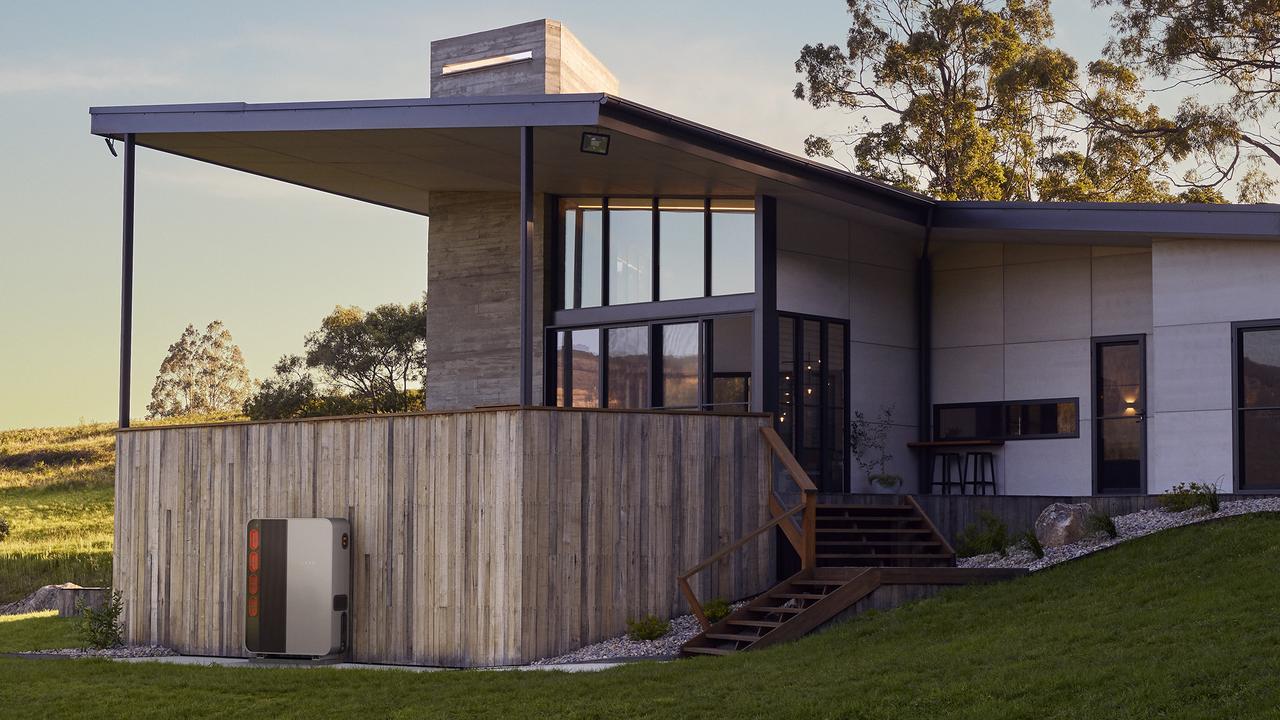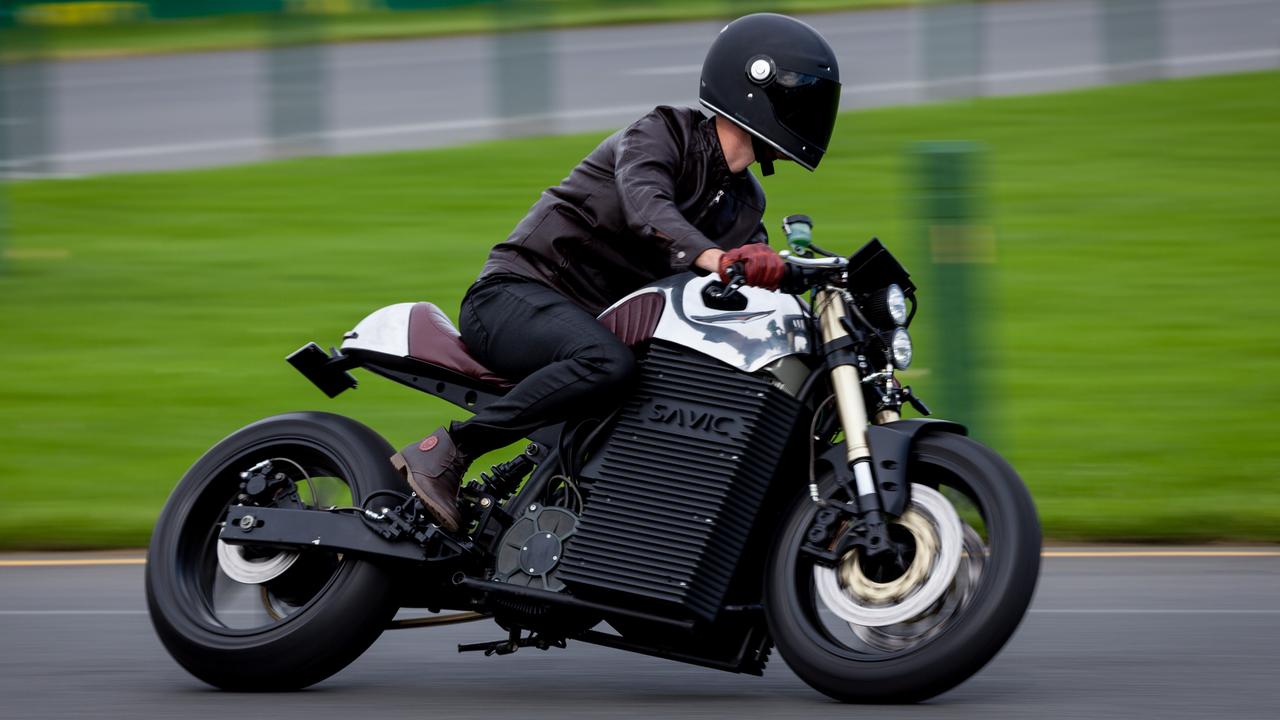The Australian inventions that could change the world
Australia is leading the world in the development of many new technologies. Here are some of the most cutting edge inventions you never knew about.
Australian inventions are often celebrated well after they have changed the world, but one exhibition seeks to highlight the amazing cutting-edge innovations being developed in the country right now.
This includes the world’s first hydrogen battery developed for use in people’s homes or businesses, which may even rival Tesla’s Powerwall some day.
The battery, along with an electric motorbike, printable solar film, and microalgae technology to generate fuel and biodegradable plastics, are among a wide range of projects on display at Sydney’s Australian Museum as part of the Spark exhibition.
Most of the technologies are available now or will be available commercially later this year.
Australian Museum’s manager of climate change projects Dr Jenny Newell said the point of the exhibition was to get people excited for all the solutions available to combat climate change.
“(These solutions) are cheaper, more fair and can create a better world. It’s a win, win, win,” she said.
Home-sized hydrogen battery
Until now, the storage of power generated by rooftop solar has been provided by lithium batteries like Tesla’s Powerwall, but Australians have now developed an alternative that uses cutting-edge hydrogen technology instead.
Developed in partnership with the University of NSW, Sydney, the LAVO hydrogen hybrid battery can store more than 40kWh of electricity – enough to power the average Australian home for two days.
It can integrate with people’s rooftop solar systems and can last for around 30 years, which is three times longer than many lithium batteries including the Powerwall.
“It’s a great looking unit, it’s stylish and fits into a home or business quite easily,” Dr Newell said.
“Plug into your water system or solar system and get free energy for 30 years.”
The unit costs about $34,000 and is available to pre-order for delivery later this year.
RELATED: Support for radical climate plan

A ‘green’ solution to plastic waste
Humble microalgae — tiny, microscopic plants that grow in fresh and saltwater — are carbon absorbing machines and Australian scientists have learnt how to harness this amazing ability.
Algae already produces more than 50 per cent of the world’s oxygen and the University of Technology Sydney Climate Change Cluster (C3) has developed a bioreactor for large-scale production of microalgae to ramp this up even more.
A 400 litre bioreactor installed in the Young Henrys Newtown brewery in Sydney has been found to produce as much oxygen as one hectare of Australian forest, by consuming carbon created by the beer brewing process and releasing oxygen.
A smaller version (in a cylinder about 90cm tall) is being displayed in the exhibition, and is generating fertiliser for the museum’s garden every 10 days.
Dr Newell said algae could also be used to make petrochemicals for fuel and biodegradable plastics that can be returned to earth more readily than current products.
Plastic Crocs-like shoes made from algae are already available, and the plans could also be harnessed to produce fertiliser and possibly energy.
RELATED: Blood red algae takes over Antarctica

Racer powered by solar
Australia’s first high-performance electric road bike will be available this year for those climate loving motoring enthusiasts.
Savic Motorcycles are electric powered but can still hit 100kph in 3.5 seconds.
Designed and built in Australia, the developers say their vehicles cost about 80 per cent less to run than your old petrol-powered bike.
The top-of-the-line Alpha series can travel 200km in the city, with a charge time of four hours, for a cost of $23,990.
One of the bikes is available to check out at the museum and there are QR code links to all the companies in the exhibition.
RELATED: Aussies keen on electric cars

Another Aussie success story on display — Tritium — is a Brisbane based company, that has developed a world-leading fast EV charger that we could soon see dotted along Australia’s highways.
“It has been supplying the world but is only now starting in Australia,” Dr Newell said.

Portable solar and wind – how flexible can you get?
We’re used to seeing huge solar panels on people’s roofs but the next innovation is printed solar film developed by the CSIRO.
The government agency has developed solar film in 10cm or 30cm widths that can be manufactured in cut-to-measure lengths.
“You can put it on tents and put it out to communities,” Dr Newell said. “It’s about making solar more accessible.”
Due to its lightweight and flexible structure, it can also be used for portable consumer products, such as on laptop bags to charge people’s computers on the go.
Dr Newell said the exhibition also displayed solar roof tiles as well as the world’s most efficient small scale wind turbine, which was only about one metre square, and developed by the University of Newcastle-based start-up, Diffuse Energy.
“It’s a great source of reliable energy without needing a diesel generator,” Dr Newell said.
RELATED: Ikea launches range of rooftop solar panels





